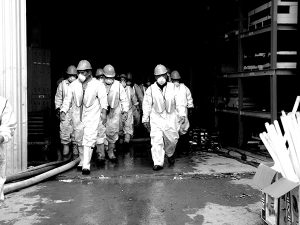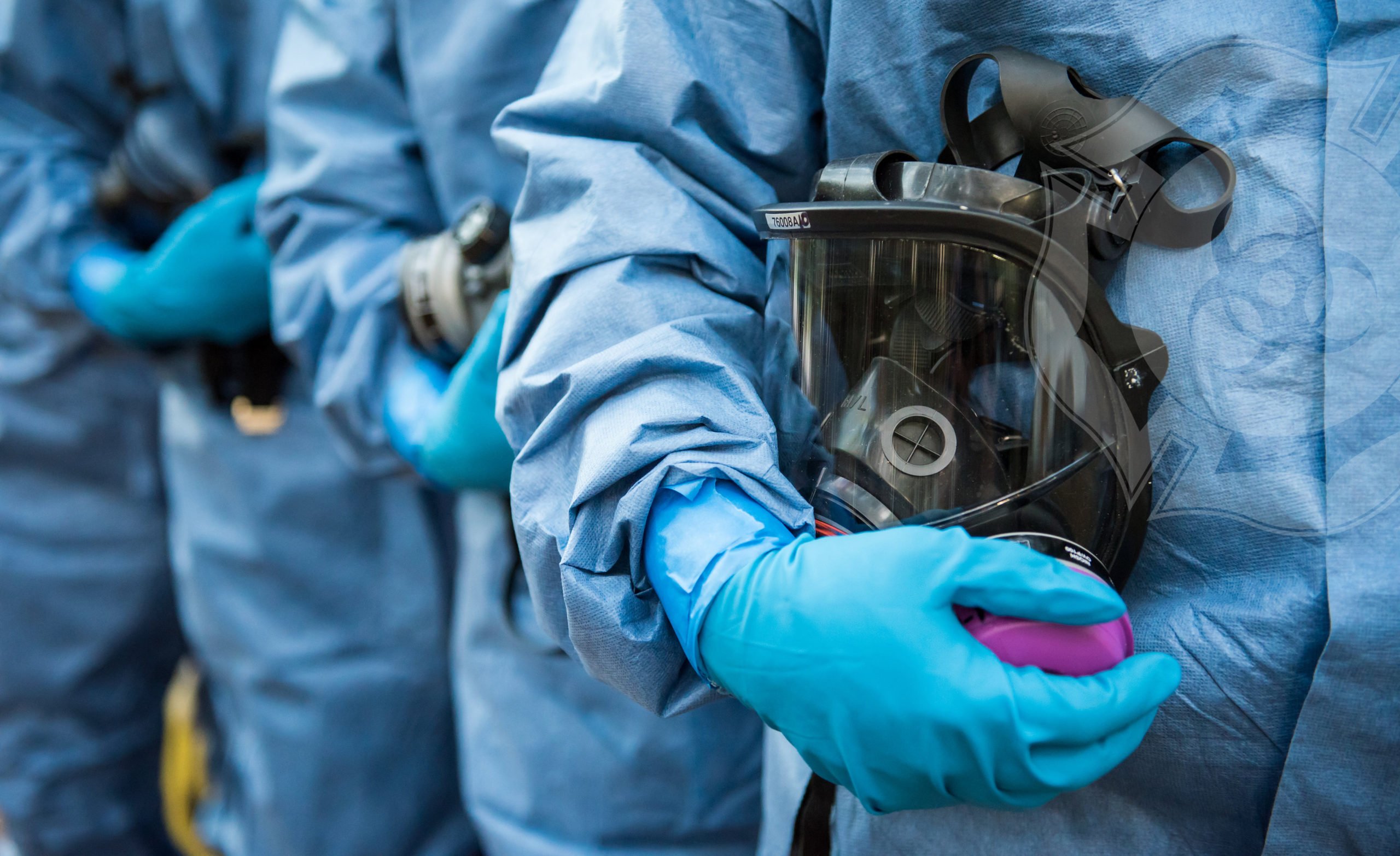Specialist Biohazard Cleansing and Decontamination for Blood, Bodily Fluids, and Hazardous Materials
The potential health risks linked with exposure to biohazards underscore the vital requirement for thorough handling and comprehensive cleanup. As we browse the intricate landscape of biohazard cleanup, comprehending the nuances of laws, conformity, and the customized tools at play comes to be critical in guaranteeing a secure and comprehensive purification procedure.
Health Dangers of Biohazard Exposure
Direct exposure to biohazards postures significant health and wellness threats that can lead to serious repercussions for neighborhoods and people alike. Biohazards incorporate a wide variety of organic substances, consisting of blood, bodily liquids, mold, bacteria, viruses, and other possibly contagious products. When individuals come right into contact with these biohazards, whether via mishaps, improper handling, or environmental direct exposure, they encounter the risk of having severe health problems or diseases.
Among the primary health risks associated with biohazard direct exposure is the transmission of transmittable illness. Bloodborne microorganisms such as HIV, liver disease B and C, and different bacteria can be existing in biohazardous products, posing a straight danger to human health. Inhaling air-borne biohazards like mold spores or entering contact with infected surface areas can likewise lead to respiratory concerns, allergies, and various other unfavorable wellness results.
Additionally, biohazard exposure can have long-lasting health implications, with some illness showing up years after the initial call (Blood Cleanup). Consequently, it is critical to prioritize correct biohazard cleaning and purification to mitigate these health and wellness dangers and guarantee the safety of individuals and areas

Specialized Educating for Biohazard Cleanup
When it comes to dealing with biohazard cleanup successfully and safely, specialized training plays a fundamental function in guaranteeing proper decontamination procedures are complied with. Biohazard cleaning needs specific expertise and abilities to properly alleviate threats related to bloodborne virus, bodily fluids, and unsafe products. Experts educated in biohazard clean-up go through strenuous direction on just how to securely manage, eliminate, and dispose of biohazardous materials to avoid contamination and direct exposure.
Specialized training for biohazard cleaning covers a variety of important topics, including correct personal protective devices (PPE) usage, bloodborne virus recognition, decontamination methods, and contaminated materials disposal protocols. Individuals learnt biohazard clean-up are equipped with the required proficiency to evaluate contamination levels, determine possible hazards, and implement proper cleaning treatments in conformity with governing requirements.
Continuous training and education are vital in the field of biohazard cleanup to stay upgraded on the most recent decontamination innovations, safety and security methods, and guidelines. By investing in specialized training, biohazard cleaning experts can efficiently react to emergency situation clean-up situations and protect both public wellness and the setting.
Significance of Appropriate Purification Strategies
Using proper purification methods is important in biohazard cleaning to successfully reduce and remove harmful materials health dangers. Effective decontamination not only makes sure the removal of visible traces of blood, bodily liquids, and other biohazards yet additionally targets official source unnoticeable pathogens that may present serious health hazards otherwise correctly eliminated. By complying with rigid decontamination procedures, educated professionals can dramatically minimize the danger of direct exposure to unsafe bacteria, infections, and germs that could result in illness or infections.
Correct purification strategies entail using specialized devices and disinfectants that are particularly developed to counteract biohazards effectively. Comprehensive cleansing and sanitation of contaminated areas are necessary to protect against the spread of virus and ensure a secure environment for occupants. In addition, the proper disposal of biohazardous waste adhering to decontamination treatments is vital in preventing contamination of various other surfaces or people.

Tools and Tools for Safe Clean-up
The proper equipment and tools play an important duty in making certain the safe and efficient clean-up of biohazardous products. When taking care of blood, physical fluids, or dangerous products, biohazard cleansing specialists rely upon specialized gear to lessen direct exposure risks and completely sanitize the affected location. Personal protective equipment (PPE) such as gloves, coveralls, masks, and goggles are important to safeguard against straight call with possibly infectious materials. In addition, biohazard cleansing kits containing disinfectants, absorbent products, and biohazard bags are used to safely have and Check Out Your URL get rid of of contaminated things. Blood Cleanup.
Advanced cleaning devices like hospital-grade anti-bacterials, HEPA-filtered vacuum cleaners, and misting devices are used to sterilize surface areas and remove biohazards efficiently. Specialized equipment such as sharps containers and biohazard waste disposal bins are utilized to safely take care of sharp items and biohazardous waste products. By utilizing the best tools and tools, biohazard cleaning specialists can ensure a thorough cleaning process that focuses on safety and security and reduces wellness risks for both employees and occupants of the afflicted area.
Rules and Conformity in Biohazard Cleansing
Appropriate adherence to regulations and compliance criteria is vital in biohazard cleaning to guarantee the safety of both personnel and the atmosphere. Federal government agencies such as OSHA (Occupational Safety and Health Management) and the EPA (Environmental Protection Firm) have actually developed particular guidelines for biohazard cleanup procedures to minimize health risks and environmental contamination. These regulations cover a variety of elements consisting of the handling, transport, and disposal of biohazardous products, in addition to the required training and protective equipment required for employees associated with the cleanup procedure.
Biohazard cleaning firms should remain updated with these laws to assure that their operations meet the required safety and security requirements. Failing to abide by these laws can result in extreme consequences, consisting of fines, legal action, and jeopardizing the wellness of people and the atmosphere. By pop over to this site complying with stringent regulations and conformity actions, biohazard cleaning business can effectively alleviate risks and ensure a risk-free and comprehensive cleanup process for all events involved.
Final Thought
Finally, biohazard cleaning and decontamination need customized training, proper techniques, and adherence to regulations. Exposure to blood, physical liquids, and hazardous materials positions substantial wellness threats, making it vital to make use of the right tools and devices for risk-free cleanup. By complying with strict procedures and guidelines, specialists can efficiently alleviate the risks associated with biohazard exposure and make certain the safety and security of both themselves and others.
As we browse the elaborate landscape of biohazard cleanup, understanding the nuances of regulations, conformity, and the specific devices at play comes to be imperative in making sure a thorough and safe decontamination procedure. (Blood Cleanup)
When it comes to dealing with biohazard clean-up efficiently and securely, specialized training plays a basic role in ensuring proper purification treatments are complied with.Using proper purification strategies is important in biohazard clean-up to efficiently eliminate hazardous materials and minimize health dangers. Additionally, biohazard cleansing kits including anti-bacterials, absorptive materials, and biohazard bags are used to safely include and dispose of contaminated items.
Federal government companies such as OSHA (Occupational Safety and Health And Wellness Management) and the EPA (Environmental Protection Company) have actually established specific standards for biohazard cleaning treatments to minimize health dangers and ecological contamination.